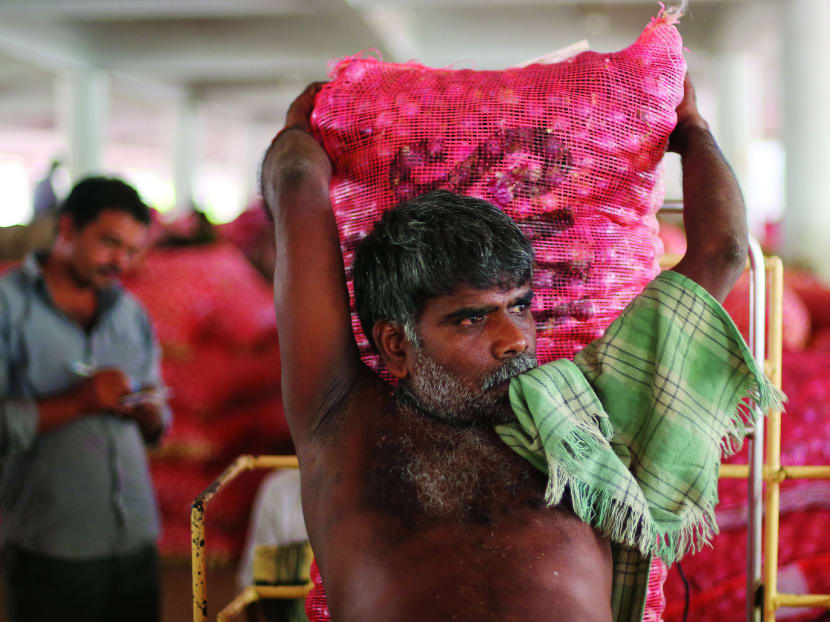Onion shortage a hot potato in Indian politics
NEW DELHI — Global markets may be see-sawing wildly, but in India the price of a key asset class is rocketing: Onions, a crucial ingredient for most Indian dishes, and one of the country’s most politically sensitive commodities.

The price of onions, a vital ingredient in most Indian dishes, has more than doubled in the past month. Onion price spikes have been a decisive factor in some previous elections. photo: AP
NEW DELHI — Global markets may be see-sawing wildly, but in India the price of a key asset class is rocketing: Onions, a crucial ingredient for most Indian dishes, and one of the country’s most politically sensitive commodities.
In the past month, onion prices in the vast Lasalgaon wholesale market in Maharashtra, India’s biggest onion-growing state, surged to a new high of 57 rupees (S$1.21) per kg, up from 25 rupees at the end of July. Retail prices are now averaging about 80 rupees per kg, raising fears they could cross the 100-rupee per kg mark.
High onion prices are a big problem for Prime Minister Narendra Modi and his ruling Bharatiya Janata Party (BJP), ahead of crucial state legislative assembly elections in Bihar.
The BJP is hoping for a decisive election victory in Bihar to reaffirm Mr Modi’s popularity and reinvigorate the government, after a difficult year when many crucial reforms have stalled. But high onion prices could sour the public mood in a state that grows few of its own and depends mostly on supplies from other parts of the country.
Onion prices have a politically potent history in India: They were considered a decisive factor in the outcome of two state elections in 1998, and were blamed for the fall of the central government in 1980.
Mr Modi’s government has blamed the current spurt in price on unseasonal rains during the crucial March to June growing season, which yields about 60 per cent of India’s total annual onion production — and provides supplies that are supposed to last consumers through until October or November.
But critics believe a powerful clutch of traders who control much of India’s onion supplies are working together to manipulate the market and drive up prices, as a 2012 study sponsored by the Competition Commission of India found they had done on occasion in the past.
“The root cause of the surge in onion prices is collusion among a few traders,” the deputy editor of the Mint newspaper, Mr Anil Padmanabhan, wrote in a column, noting that a previous onion price spike in 2011 was contained when income-tax officials raided several large traders, and prices promptly fell 60 per cent.
New Delhi is trying to ease supply constraints. On Sunday, it raised the minimum export price to US$700 (S$980) per tonne, up from US$425 in June, in a bid to discourage exports. It is also now trying to import 10,000 tonnes of onions from neighbouring countries. The consumer affairs minister, Mr Ram Vilas Paswan, has also ordered a crackdown on hoarders, especially in Maharashtra.
In the meantime, the onion price spike has led to some unusual law-and-order situations. Last week, a Mumbai vegetable vendor reported that thieves had stolen 14 gunny sacks of onions, weighing about 700kg, from his cart. On Sunday, an onion trader reported the theft of 2,000kg of the vegetable from his warehouse in Maharashtra.
Some state governments, including Andhra Pradesh and West Bengal, have begun selling highly subsidised onions through government stalls, but have put quotas on how much individuals can buy. THE FINANCIAL TIMES






